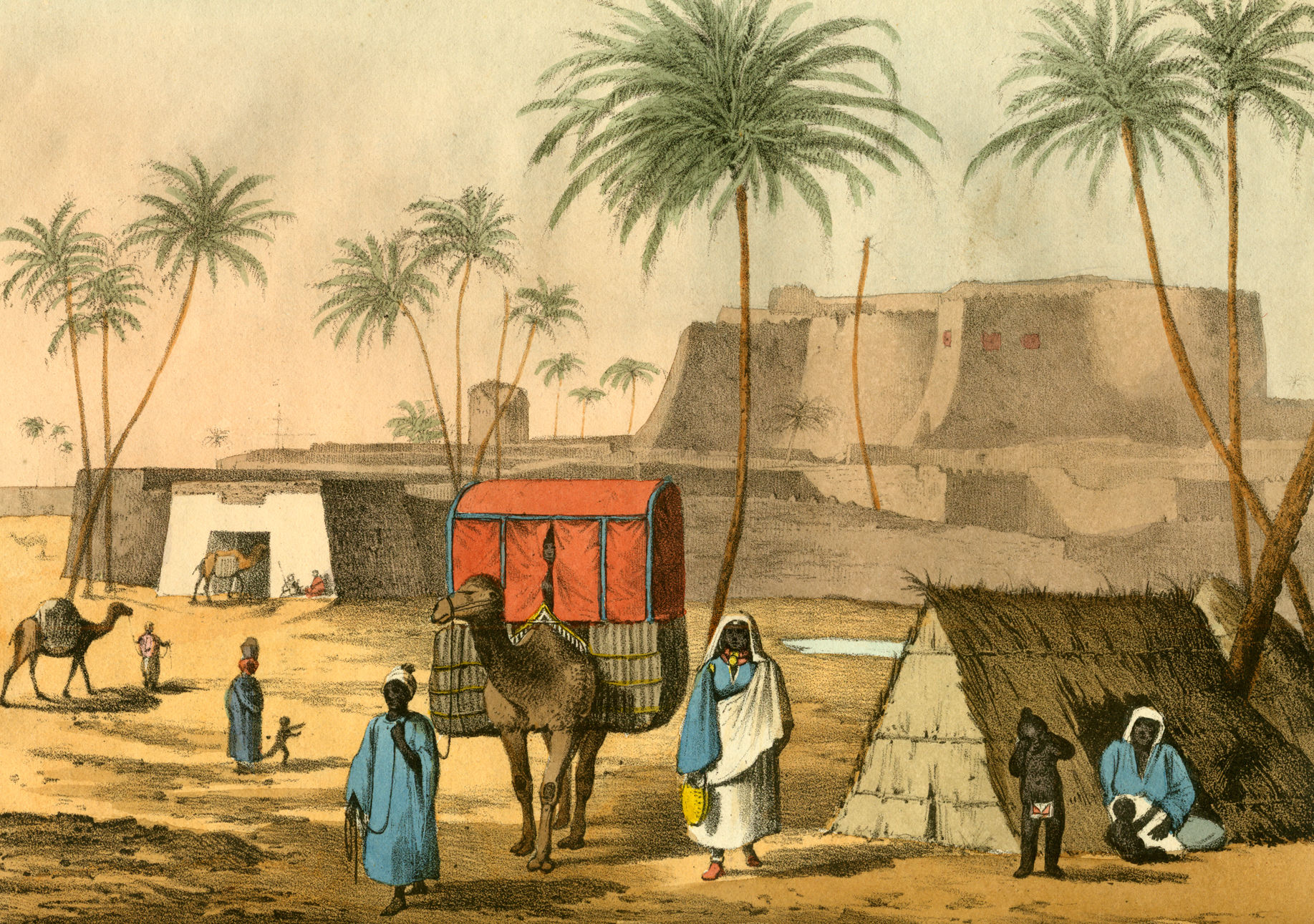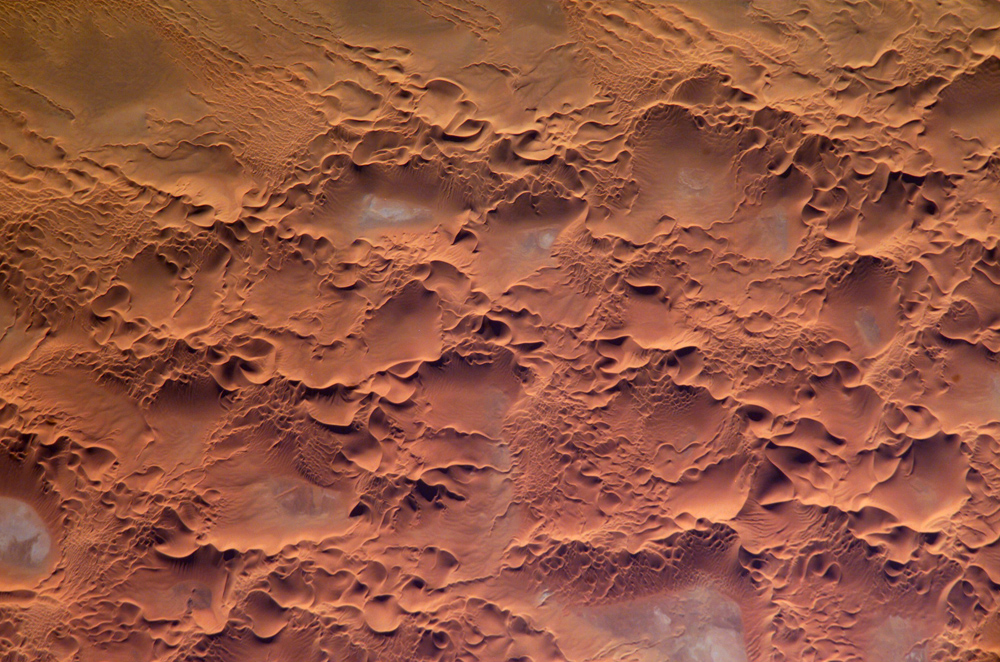|
Murzuk
Murzuk, Murzuq, Murzug or Merzug ( ar, مرزق) is an oasis town and the capital of the Murzuq District in the Fezzan region of southwest Libya.Robinson, Harry (1960) "Murzuq" ''The Mediterranean Lands'' University Tutorial Press, London, p. 414 It lies on the northern edge of the Murzuq Desert, an extremely arid region of ergs or great sand dunes which is part of the greater Sahara Desert. History Murzuk developed around an oasis which served as a stop on the north-south trade route across the Sahara Desert. From the 5th century BC to the 5th century AD, Marzuk was home to the Garamantian Empire, a city state which operated the Trans-Saharan trade routes between the Carthaginians—and later the Roman Empire—and the Sahelian states of West and Central Africa. By 1300, the area was ruled by the Kanem Empire. According to Helmuth Kanter, a Moroccan tribe overran the area in 1310 and established Murzuk as the capital of their sultanate. The fortress, now in ruins, was built aro ... [...More Info...] [...Related Items...] OR: [Wikipedia] [Google] [Baidu] |
Murzuq District
Murzuq ( ar, مرزق ''Murzuq'') is one of the districts of Libya. It is in the south of the country. Its capital is Murzuk. The city was occupied by the Ottoman Empire in 1578 and served as the capital of Fezzan off and on until the Ottomans ceded Libya to Italy in 1912. It was not occupied by the Italians until 1914. To the southeast, Murzuq borders the Bourkou-Ennedi-Tibesti Region of Chad, and to the southwest it borders the Agadez Department of Niger. The border crossing to Niger is at Tumu. Domestically, it borders Ghat in the west, Wadi al Hayaa in northwest, west of Sabha, Sabha in northwest, east of Wadi Al Hayaa, Jufra in north and Kufra in the east. Per the census of 2012, the total population in the region was 157,747 with 150,353 Libyans. The average size of the household in the country was 6.9, while the average household size of non-Libyans being 3.7. There were totally 22,713 households in the district, with 20,907 Libyan ones. The population density of t ... [...More Info...] [...Related Items...] OR: [Wikipedia] [Google] [Baidu] |
Fezzan
Fezzan ( , ; ber, ⴼⵣⵣⴰⵏ, Fezzan; ar, فزان, Fizzān; la, Phazania) is the southwestern region of modern Libya. It is largely desert, but broken by mountains, uplands, and dry river valleys (wadis) in the north, where oases enable ancient towns and villages to survive deep in the otherwise inhospitable Sahara Desert. The term originally applied to the land beyond the coastal strip of Africa proconsularis, including the Nafusa and extending west of modern Libya over Ouargla and Illizi. As these Berber areas came to be associated with the regions of Tripoli, Cirta or Algiers, the name was increasingly applied to the arid areas south of Tripolitania. After the 1934 formation of Libya, the Fezzan province was designated as one of the three primary provinces of the country, alongside Tripolitania province to the north and Cyrenaica province to the northeast. Name In Berber languages, ''Fezzan'' (or ''ifezzan'') means "rough rocks". ''Fezzan'' could also be a de ... [...More Info...] [...Related Items...] OR: [Wikipedia] [Google] [Baidu] |
Murzuq Desert
The Murzuq Desert, Idehan Murzuq, Idhan Murzuq, (also Murzaq, Murzuk, Marzuq and Murzak), is an erg in southwestern Libya with a surface of approximately 58,000 km2. It is named after the town of Murzuk in the Fezzan. Like the Idehan Ubari further north, the Idehan Murzuq is part of the greater Sahara Desert region. It is separated from the southern Sahara Desert by the Tibesti Mountains and the Tassili n'Ajjer. Dune pattern The ''“Draa”'' dunes (from the Arabic for “arm”) are very large masses of sand in the western part of Libya's vast Murzuq Desert, and they appear in satellite images as a broad network of yellow-orange sand masses, with smooth-floored, almost sand-free basins between them. Geologists think that the ''draa'' of the Marzuq were probably formed by winds different from the prevailing north-northeast winds of today. Numerous smaller dunes have developed on the backs of the ''draa''. Three distinct dune types are visible in satellite images of the region: ... [...More Info...] [...Related Items...] OR: [Wikipedia] [Google] [Baidu] |
Libya
Libya (; ar, ليبيا, Lībiyā), officially the State of Libya ( ar, دولة ليبيا, Dawlat Lībiyā), is a country in the Maghreb region in North Africa. It is bordered by the Mediterranean Sea to the north, Egypt to the east, Sudan to the southeast, Chad to the south, Niger to the southwest, Algeria to the west, and Tunisia to the northwest. Libya is made of three historical regions: Tripolitania, Fezzan, and Cyrenaica. With an area of almost 700,000 square miles (1.8 million km2), it is the fourth-largest country in Africa and the Arab world, and the 16th-largest in the world. Libya has the 10th-largest proven oil reserves in the world. The largest city and capital, Tripoli, is located in western Libya and contains over three million of Libya's seven million people. Libya has been inhabited by Berbers since the late Bronze Age as descendants from Iberomaurusian and Capsian cultures. In ancient times, the Phoenicians established city-states and tr ... [...More Info...] [...Related Items...] OR: [Wikipedia] [Google] [Baidu] |
Districts Of Libya
In Libya there are currently 106 districts, second level administrative subdivisions known in Arabic as ''baladiyat'' (singular ''baladiyah''). The number has varied since 2013 between 99 and 108. The first level administrative divisions in Libya are currently the governorates (''muhafazat''), which have yet to be formally deliniated, but which were originally tripartite as: Tripolitania in the northwest, Cyrenaica in the east, and Fezzan in the southwest; and later divided into ten governorates. Prior to 2013 there were twenty-two first level administrative subdivisions known by the term ''shabiyah'' (Arabic singular ''šaʿbiyya'', plural ''šaʿbiyyāt'') which constituted the districts of Libya. In the 1990s the shabiyat had replaced an older baladiyat system. Historically the area of Libya was considered three provinces (or states), Tripolitania in the northwest, Cyrenaica in the east, and Fezzan in the southwest. It was the conquest by Italy in the Italo-Turkish ... [...More Info...] [...Related Items...] OR: [Wikipedia] [Google] [Baidu] |
Vehicle Registration Plates Of Libya
Libya requires its residents to register their motor vehicles and display vehicle registration plates. Current plates are European standard 520 mm × 110 mm. Current Series Libya's current series of license plates entered circulation in 2013, after Libyan Revolution and the overthrow of Gaddafi. Numbers on license plates are in Latin Alphabet, and all plates carry the Arabic text ليبيا meaning ''Libya'', in Naskh Script, either on the right hand side or the right top corner. Private Vehicles Private vehicle license plates are black on white and follow the format ''# - 1 to 999999 The First number (#), a 1 or 2 digit number consists of a code corresponding to Municipality in Libya. This number is separated by a dash from the registration code, which can be 1 to 6 digits. In the city of Tripoli, due to its larger population, 7-digit registration codes are also issued. Foreigner-owned Private Vehicles Foreigner-owned Private vehicle license plates are black on ... [...More Info...] [...Related Items...] OR: [Wikipedia] [Google] [Baidu] |
Erg (landform)
An erg (also sand sea or dune sea, or sand sheet if it lacks dunes) is a broad, flat area of desert covered with wind-swept sand with little or no vegetative cover. The word is derived from the Arabic word ''ʿarq'' (), meaning "dune field". Strictly speaking, an erg is defined as a desert area that contains more than of aeolian or wind-blown sand and where sand covers more than 20% of the surface. Smaller areas are known as "dune fields". The largest hot desert in the world, the Sahara, covers and contains several ergs, such as the Chech Erg and the Issaouane Erg in Algeria. Approximately 85% of all the Earth's mobile sand is found in ergs that are greater than . Ergs are also found on other celestial bodies, such as Venus, Mars, and Saturn's moon Titan. Description Ergs are concentrated in two broad belts between 20° to 40°N and 20° to 40°S latitudes, which include regions crossed by the dry, subsiding air of the trade winds. Active ergs are limited to regions that ... [...More Info...] [...Related Items...] OR: [Wikipedia] [Google] [Baidu] |
Central African Republic
The Central African Republic (CAR; ; , RCA; , or , ) is a landlocked country in Central Africa. It is bordered by Chad to the north, Sudan to the northeast, South Sudan to the southeast, the DR Congo to the south, the Republic of the Congo to the southwest, and Cameroon to the west. The Central African Republic covers a land area of about . , it had an estimated population of around million. , the Central African Republic is the scene of a civil war, ongoing since 2012. Most of the Central African Republic consists of Sudano-Guinean savannas, but the country also includes a Sahelo- Sudanian zone in the north and an equatorial forest zone in the south. Two-thirds of the country is within the Ubangi River basin (which flows into the Congo), while the remaining third lies in the basin of the Chari, which flows into Lake Chad. What is today the Central African Republic has been inhabited for millennia; however, the country's current borders were established by Fran ... [...More Info...] [...Related Items...] OR: [Wikipedia] [Google] [Baidu] |
Tuareg
The Tuareg people (; also spelled Twareg or Touareg; endonym: ''Imuhaɣ/Imušaɣ/Imašeɣăn/Imajeɣăn'') are a large Berber ethnic group that principally inhabit the Sahara in a vast area stretching from far southwestern Libya to southern Algeria, Niger, Mali, and Burkina Faso. Traditionally nomadic pastoralists, small groups of Tuareg are also found in northern Nigeria. The Tuareg speak languages of the same name (also known as ''Tamasheq''), which belong to the Berber branch of the Afroasiatic family. The Tuaregs have been called the "blue people" for the indigo dye coloured clothes they traditionally wear and which stains their skin. They are a semi-nomadic people who practice Islam, and are descended from the indigenous Berber communities of Northern Africa, which have been described as a mosaic of local Northern African (Taforalt), Middle Eastern, European (Early European Farmers), and Sub-Saharan African-related ancestries, prior to the Arab expansion. Tuareg people a ... [...More Info...] [...Related Items...] OR: [Wikipedia] [Google] [Baidu] |
Berbers
, image = File:Berber_flag.svg , caption = The Berber flag, Berber ethnic flag , population = 36 million , region1 = Morocco , pop1 = 14 million to 18 million , region2 = Algeria , pop2 = 9 million to ~13 million , region3 = Mauritania , pop3 = 2.9 million , region4 = Niger , pop4 = 2.6 million, Niger: 11% of 23.6 million , region5 = France , pop5 = 2 million , region6 = Mali , pop6 = 850,000 , region7 = Libya , pop7 = 600,000 , region8 = Belgium , pop8 = 500,000 (including descendants) , region9 = Netherlands , pop9 = 467,455 (including descendants) , region10 = Burkina Faso , pop10 = 406,271, Burkina Faso: 1.9% of 21.4 million , region11 = Egypt , pop11 = 23,000 or 1,826,580 , region12 = Tunisia , ... [...More Info...] [...Related Items...] OR: [Wikipedia] [Google] [Baidu] |
Chad
Chad (; ar, تشاد , ; french: Tchad, ), officially the Republic of Chad, '; ) is a landlocked country at the crossroads of North and Central Africa. It is bordered by Libya to the north, Sudan to the east, the Central African Republic to the south, Cameroon to the southwest, Nigeria to the southwest (at Lake Chad), and Niger to the west. Chad has a population of 16 million, of which 1.6 million live in the capital and largest city of N'Djamena. Chad has several regions: a desert zone in the north, an arid Sahelian belt in the centre and a more fertile Sudanian Savanna zone in the south. Lake Chad, after which the country is named, is the second-largest wetland in Africa. Chad's official languages are Arabic and French. It is home to over 200 different ethnic and linguistic groups. Islam (55.1%) and Christianity (41.1%) are the main religions practiced in Chad. Beginning in the 7th millennium BC, human populations moved into the Chadian basin in great ... [...More Info...] [...Related Items...] OR: [Wikipedia] [Google] [Baidu] |
Ottoman Empire
The Ottoman Empire, * ; is an archaic version. The definite article forms and were synonymous * and el, Оθωμανική Αυτοκρατορία, Othōmanikē Avtokratoria, label=none * info page on book at Martin Luther University) // CITED: p. 36 (PDF p. 38/338) also known as the Turkish Empire, was an empire that controlled much of Southeast Europe, Western Asia, and North Africa, Northern Africa between the 14th and early 20th centuries. It was founded at the end of the 13th century in northwestern Anatolia in the town of Söğüt (modern-day Bilecik Province) by the Turkoman (ethnonym), Turkoman tribal leader Osman I. After 1354, the Ottomans crossed into Europe and, with the Ottoman wars in Europe, conquest of the Balkans, the Ottoman Anatolian beyliks, beylik was transformed into a transcontinental empire. The Ottomans ended the Byzantine Empire with the Fall of Constantinople, conquest of Constantinople in 1453 by Mehmed the Conqueror. Under the reign of Sule ... [...More Info...] [...Related Items...] OR: [Wikipedia] [Google] [Baidu] |




